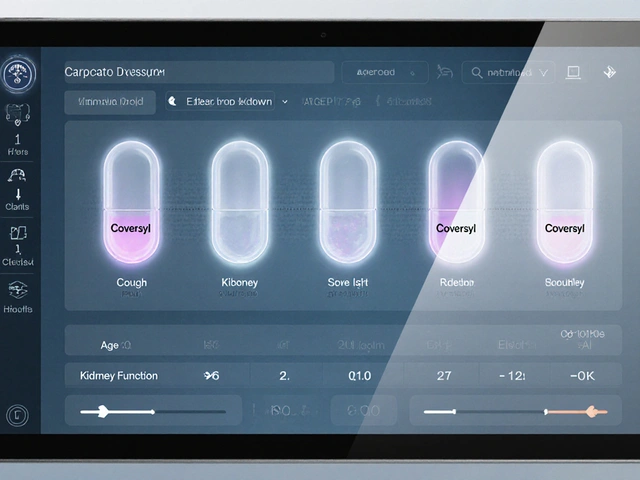When your nose runs, your eyes itch, or you can’t catch a full breath without coughing, it’s not just a cold. For over 50 million Americans, these symptoms are caused by allergens hiding in plain sight-in your mattress, your couch, even the air you breathe. The good news? You don’t have to live like this. Allergen avoidance isn’t about extreme clean-ups or throwing out everything you own. It’s about smart, targeted changes that actually work.
What’s Really Triggering Your Allergies?
Most people think pollen is the main culprit, but indoors is where the real battle happens. Eighty percent of allergy sufferers react to house dust mites. These microscopic bugs live in bedding, carpets, and upholstered furniture, feeding on dead skin cells. Their waste is what triggers sneezing, wheezing, and itchy eyes. Cat and dog dander is next on the list-tiny flakes of skin and saliva that stick to clothes, walls, and furniture. Mold grows in damp corners, especially bathrooms and basements. Cockroach droppings, often overlooked, are a major trigger in older buildings and urban homes. The key is knowing what you’re allergic to. Getting tested by an allergist isn’t optional-it’s the first step. If you’re only allergic to dust mites, spending $2,000 on a whole-house air purifier won’t help as much as putting a $50 cover on your pillow. Tailoring your strategy to your specific triggers makes all the difference.Dust Mite Control: The #1 Priority
If you’re allergic to dust mites (and most people are), your bedroom is ground zero. Start here:- Buy allergen-proof mattress, pillow, and duvet covers. Look for ones labeled "impermeable"-they block mites and their waste from escaping. These reduce exposure by 73% to 90%.
- Wash all bedding weekly in water at least 130°F (54.4°C). Cold or warm water won’t kill mites. Hot water is non-negotiable.
- Keep bedroom humidity below 50%. Use a hygrometer to monitor it. If it’s higher, run a dehumidifier. Mites can’t survive in dry air.
- Replace carpets with hard flooring if possible. If you keep rugs, vacuum them weekly with a HEPA-filter vacuum.
- Keep stuffed animals out of the bed-or wash them weekly in hot water.
Managing Pet Dander Without Giving Up Your Pet
You don’t have to say goodbye to your cat or dog. But you do need boundaries.- Keep pets out of the bedroom. This is the single most effective step. Studies show pet-free bedrooms reduce allergen levels by 50% or more.
- Bathe cats weekly. It cuts airborne cat allergen (Fel d 1) by 41%. Use a pet-safe shampoo.
- Use a vacuum with a true HEPA filter. Regular vacuums blow allergens back into the air. HEPA traps them. Vacuum floors, furniture, and curtains at least twice a week.
- Wipe down pets with a damp cloth 2-3 times a week. This removes loose dander before it spreads.
- Install a HEPA air purifier in the main living area. Look for one rated for your room size and capable of 4-6 air changes per hour.
Controlling Mold and Moisture
Mold doesn’t just smell bad-it’s a powerful allergen. It thrives where there’s moisture.- Keep indoor humidity between 30% and 50%. Use a dehumidifier in basements and bathrooms.
- Fix leaks within 24-48 hours. Water sitting overnight breeds mold.
- Clean bathroom tiles, grout, and shower curtains weekly with a mold-killing cleaner. Vinegar works, but commercial products like Concrobium are more reliable.
- Use exhaust fans when showering or cooking. Leave them on for 20 minutes after.
- Don’t let laundry pile up in the bathroom. Wet clothes are mold factories.
Cockroaches and Other Pests
Cockroach allergens are especially dangerous for kids with asthma. They’re common in older apartments and cities.- Store all food in airtight containers-no exceptions. Even crumbs attract them.
- Take out the trash every day. Don’t leave it sitting overnight.
- Seal cracks and gaps around pipes and windows.
- Use bait stations or boric acid powder. Avoid sprays-they scatter allergens into the air.
- Call a professional exterminator if you see more than a few roaches. One treatment can cut allergen levels by 86%.

Why Single Fixes Don’t Work
Buying a HEPA filter alone won’t fix your allergies. Neither will just washing bedding. Studies show that single interventions reduce allergen levels by 40-65%, but symptoms barely budged in 78% of cases. The real win comes from combining 3-5 strategies:- HEPA air purifier in the bedroom
- Encased mattress and pillows
- Weekly hot water laundry
- Humidity control
- Pet restrictions
Cost vs. Benefit: What’s Worth It?
You don’t need to break the bank.| Strategy | Cost | Effectiveness | Time to See Results |
|---|---|---|---|
| Allergen-proof bedding covers | $30-$100 | 73-90% reduction | 1-2 weeks |
| Dehumidifier | $100-$150 | 70-85% mold reduction | 1-2 weeks |
| HEPA air purifier (bedroom) | $150-$400 | 80-90% airborne allergen capture | 3-7 days |
| HEPA vacuum | $200-$500 | 66% reduction in dog allergens | Immediate |
| Whole-house HVAC filter upgrade | $500-$2,500 | High, but only if properly installed | 2-4 weeks |
The Hard Truth: Adherence Is the Real Challenge
The science is clear. The tools exist. So why don’t more people get better? Because it takes effort. Washing bedding weekly. Running a dehumidifier 12 hours a day. Keeping pets out of the bedroom. Vacuuming regularly. It’s not hard-but it’s daily. Studies show that after six months, only 35% of people stick with multi-step plans. The ones who succeed? They make it part of their routine. They set phone reminders. They buy a timer for the dehumidifier. They keep cleaning supplies next to the laundry basket. Education matters too. Patients who get advice from a certified asthma educator are twice as likely to follow through as those who just get a pamphlet from their doctor.What Not to Do
Avoid these common mistakes:- Don’t use air purifiers without HEPA filters. Ionizers and ozone generators don’t remove allergens-they can make breathing worse.
- Don’t rely on air conditioning alone. It helps with pollen, but not dust mites or dander.
- Don’t try to eliminate every trace of allergen. Perfection isn’t the goal. Reduction is.
- Don’t overhaul your home for food allergies unless you’ve been diagnosed. Most people don’t need to remove all peanut butter from the house just because someone else is allergic.

What’s New in Allergen Control
Technology is catching up. New smart dehumidifiers now monitor humidity and adjust automatically. Some HVAC systems come with built-in allergen sensors that turn on filtration when levels rise. There’s even a digital toolkit from the American Academy of Allergy, Asthma & Immunology that creates a custom plan based on your home layout and allergy test results. But the biggest change? Doctors now see environmental control as essential-not optional. It’s not a substitute for medication. It’s the foundation.Where to Start Today
You don’t need to fix everything at once. Here’s your 7-day plan:- Buy a $20 hygrometer. Check your bedroom humidity.
- If it’s above 50%, rent or buy a small dehumidifier.
- Order allergen-proof covers for your mattress and pillows. You can get them online in 2 days.
- Wash your sheets in hot water this weekend.
- Put your pet’s bed in the living room.
- Buy a HEPA vacuum if you don’t have one.
- Set a weekly reminder: "Wash bedding. Check humidity. Vacuum."
Frequently Asked Questions
Do air purifiers really help with allergies?
Yes-but only if they have a true HEPA filter and are sized correctly for the room. A unit that moves 4-6 times the room’s air volume per hour is ideal. Place it in the bedroom, where you spend the most time. Avoid ionizers and ozone generators-they don’t remove allergens and can irritate lungs.
Can I still have pets if I’m allergic?
Absolutely. The key is limiting exposure. Keep pets out of bedrooms, bathe them weekly, use a HEPA vacuum, and install a HEPA air purifier in high-traffic areas. Many people with pet allergies live comfortably with their animals by following these steps. Only remove the pet if symptoms persist despite all efforts.
How often should I wash bedding to control dust mites?
Weekly. Use water at least 130°F (54.4°C). Cold or warm water won’t kill mites or remove their waste. Drying on high heat for 15 minutes is also important. If you can’t wash everything weekly, start with pillowcases and sheets-they hold the most allergens.
Is humidity control really that important?
Yes. Dust mites and mold both thrive in humidity above 50%. Keeping indoor levels between 30% and 50% stops them from multiplying. A simple $20 hygrometer tells you if you’re in the safe zone. A dehumidifier costs less than $150 and pays for itself in fewer symptoms and less medication.
Should I get rid of my carpet?
If you’re allergic to dust mites, hard flooring is better. But if you love your carpet, vacuum it twice a week with a HEPA vacuum and steam clean it every 3-6 months. You can’t eliminate mites from carpet-but you can control them.
Are there any supplements or natural remedies that help?
No. While some people swear by honey or probiotics, there’s no solid evidence they reduce allergen exposure or improve symptoms. Focus on proven environmental controls instead. Medications like antihistamines and nasal sprays help with symptoms-but they don’t fix the root cause. Environmental control does.






Johannah Lavin
I swear by allergen-proof pillowcases-my sneezing stopped within a week. 🙌 Also, I keep a little dehumidifier next to my bed and it’s like magic. No more 3 a.m. wheezing. Life changed. 💆♀️
Ravinder Singh
Wow, this is the most practical allergy guide I’ve ever read. Not a single fluff sentence. I’ve been using HEPA vacuum for 8 months now and honestly? My cat doesn’t even need to sleep in the garage anymore. Just wash sheets weekly, keep pets outta the bedroom, and boom-peaceful nights. 🌿
Russ Bergeman
Wait… you’re telling me I don’t need to buy a $2,000 air purifier? That’s it? Just… wash bedding? And use a $20 hygrometer? I feel scammed. I spent $1,200 on a Dyson that just makes noise. 😅
Dana Oralkhan
For anyone feeling overwhelmed-start with one thing. Just one. Maybe it’s washing your sheets. Maybe it’s moving your cat’s bed. Don’t try to fix everything at once. Progress > perfection. You’ve got this. And if you slip up? That’s okay. Try again tomorrow. 💛
Jeremy Samuel
ehh i dunno bout all this. i live in a dusty flat and i aint got no covers or no humidifer and i aint sneezin once. maybe its just me? or maybe its all hype?
Destiny Annamaria
OMG I just moved to a new apartment and I had NO IDEA my asthma was from cockroach droppings. I saw one roach and thought ‘ew’-now I know it’s a medical emergency. I ordered bait traps today. Thank you for saving my lungs. 🙏
Ron and Gill Day
Look, this article is cute. But unless you’re living in a sterile lab with a $5,000 HVAC system, none of this matters. Dust mites are everywhere. You’re just delaying the inevitable. Get immunotherapy or accept your fate.
Aruna Urban Planner
The underlying principle here is not control, but coexistence. We seek to reduce allergen load, not eradicate nature. This aligns with systems thinking-small, iterative adjustments yield exponential resilience. The human body, when not perpetually overstimulated, recalibrates. The real intervention is behavioral consistency, not technological intervention.
Nicole Ziegler
My mom did all this and now she can breathe while gardening. 🌸 I cried reading this. My allergies used to ruin every spring. Now I just wash my sheets and it’s like a new life.
Bharat Alasandi
Bro, the 130°F wash thing is REAL. I used to think it was overkill until I switched to hot water and my sneezing dropped 80%. Also, HEPA vacuum? Non-negotiable. My dog’s fur used to float like a cloud-now it’s gone. No more ‘dander fog’.
Kristi Bennardo
This is irresponsible. You’re telling people to rely on ‘cheap’ solutions when they should be consulting allergists, undergoing immunotherapy, and installing whole-home filtration. This is dangerous misinformation disguised as ‘practical advice’.
Ravi boy
lol i tried the covers but they felt like plastic wrap and i slept like a zombie. i just wipe my bed with wet cloth now. works fine. also my cat sleeps on my chest so… deal with it 😴
Matthew Peters
Wait-so if I combine a HEPA filter, allergen covers, weekly hot washes, and a dehumidifier… I could cut my allergy meds by 90%? That’s insane. I’ve been on nasal spray since college. I’m buying all this tomorrow. My lungs are begging me.
Liam Strachan
Interesting. I’ve lived in the UK with high humidity and mold for years. I never realized my constant congestion was from the bathroom grout. Started using vinegar weekly and my sinuses cleared up. Simple, but effective. Thanks for the reminder.